Carat weight is often the biggest concern when people are buying a diamond. I usually steer people toward looking at the quality of the cut over the size of the diamond.
But if carat is to be the top priority then obviously other areas will have to take second, third, and fourth place.
Let’s start with this search at James Allen:
The button above will return the following:
- Shapes: All
- Clarity: All
- Color: All
- Carat: minimum 1 Ct
- Budget: $3,000 to $3,500
- Sort order: Highest carat weight first
This returns diamonds of all shapes, color grades and clarities.
Sort by Carat
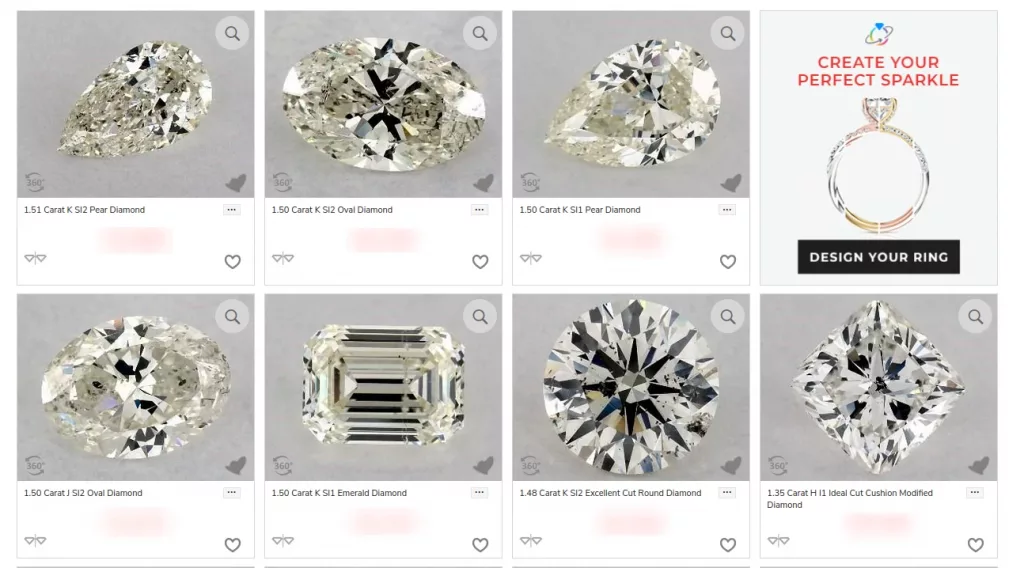
When we sort the diamonds by size we see that there are some decent sized stones in the lot. Ok, they aren’t the highest clarity, nor are they colorless, but this is how you get the biggest diamond for your dollar. Obviously if you are going to choose one of the 1.5 ct diamonds you will have to embrace something with a warmer color. Everyone has their own level of comfort in regards to how much color they want in a diamond, so if this is too much color then either scroll a bit until you see a diamond which does not have super obvious color or change the color grade slider to show a smaller range of color grades. You are also going to have to embrace the level of inclusions. Maybe think of the inclusions in the diamond as a finger print, something that makes the diamond unique.
Sort by Clarity
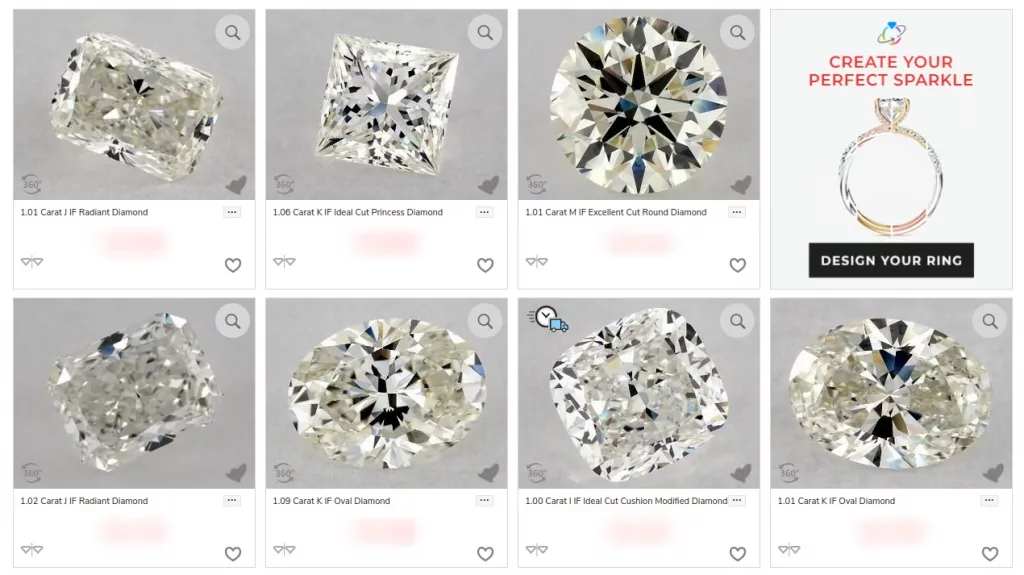
Of course clarity is something a lot of people don’t like to compromise on at all. As a matter of fact some cultures place a great deal of importance on the clarity of a diamond. If the inclusions of the diamonds the search returns are bothering you then you can easily sort the results by clarity. This returns the diamonds with the highest clarity grades first. Among these first seven stones there are several that are definitely worth a closer look. And since we set the minimum carat size at 1 ct, at least we are still getting respectable sizes.
Sort by Color
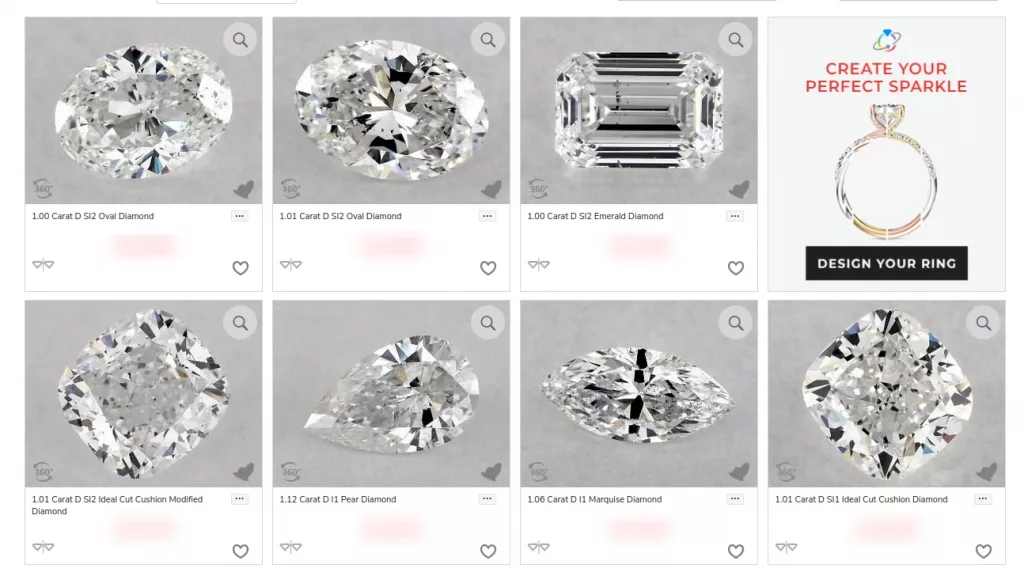
If we look at the opposite side if the color range by sorting the search results by color with D first we get two ovals, two cushions, a pear, a marquise and an emerald cut. These are all Slightly Included to Included. They aren’t going to be eye-clean, but some don’t seem too bad, really.
Sorted by Color
Eye-clean
Interestingly if we drop all the diamonds with clarity grades below VS2 so we don’t have worry about whether the diamonds are eye clean or not we get a nice array of cushion cut diamonds. As a matter of fact there are over 40 cushion cut diamonds to choose from before we get to the other shapes, with one or two exceptions.
The Best Round Brilliant
Of course the classic diamond shape is round brilliant. This is the shape for which there are more settings available as it is more versatile for jewelers to work with. And round brilliants have the potential to return light in the most efficient manner than any other shape. So I understand if none of the diamonds covered so far in this article have caught your attention.
Here’s the secret sauce to finding the best round cut brilliant diamonds around $3000 to $3500 which is over 1 carat in size.
Now these parameters are great for helping you find a beautiful diamond. This doesn’t mean that there aren’t great diamonds outside of these parameters. But these parameters will almost always return something worth seriously considering. A depth: 60% to 62% combined with a table percentage of 54% to 56% will almost invariably produce a diamond that looks fantastic.
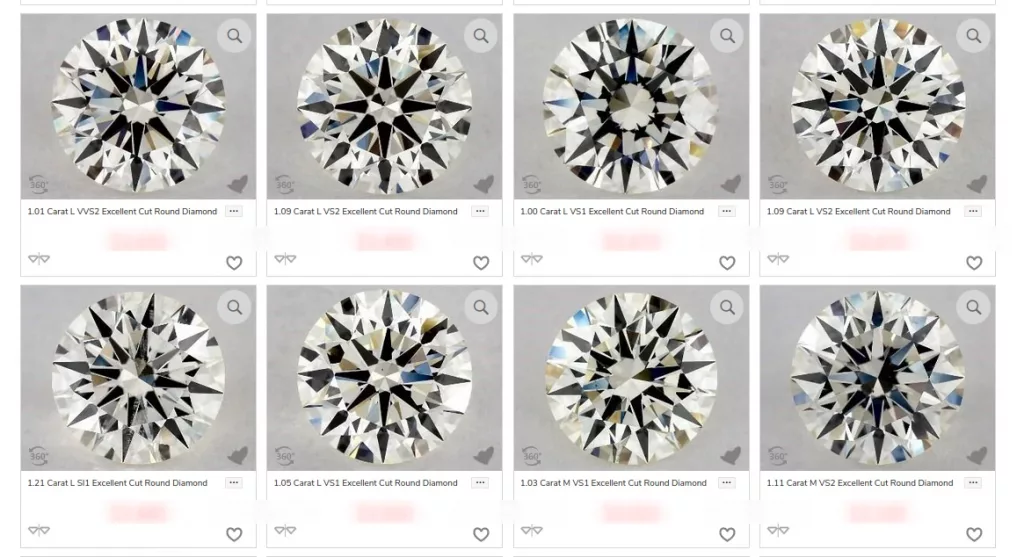
Ok, even with the above percentages selected it still has to have excellent symmetry, and it doesn’t hurt to have excellent polish, but those percentages certainly give you a head start with your search. Now I have only included GIA, in this search. I could have also included AGS, but there were no AGS graded diamonds within this range in stock at the time of writing. IGI, well, they are really good at grading lab created diamonds, but are still second choice when it comes to earth created diamonds. The main issue I have seen is that the color grades IGI issues are not quite the same as GIA. So if you want to include IGI graded diamonds just be aware that their color scale is not the same as GIA’s. (AGS and GIA use the same master stones for their color grading).
I tried the above search with IGI diamonds and there are a few worth looking at, with the above caveat regarding color.


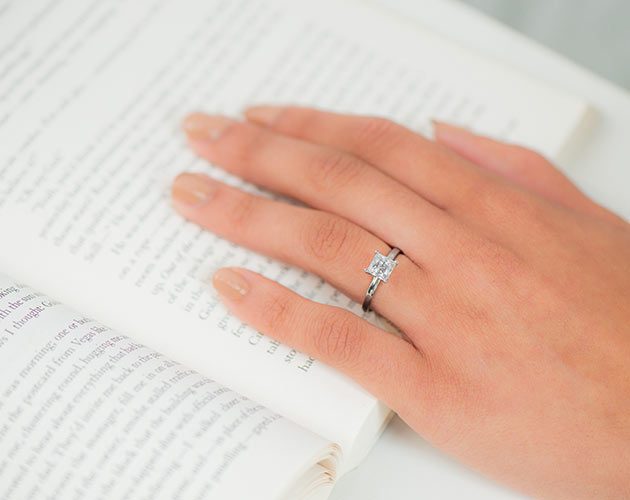
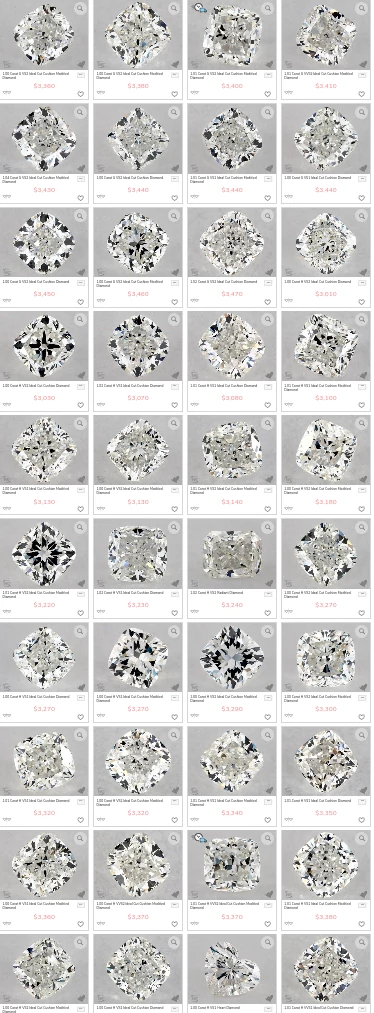
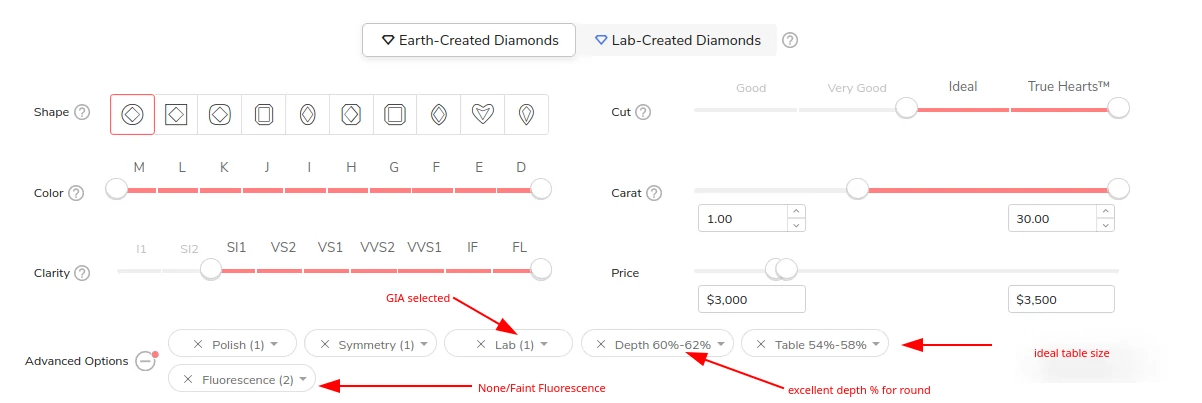
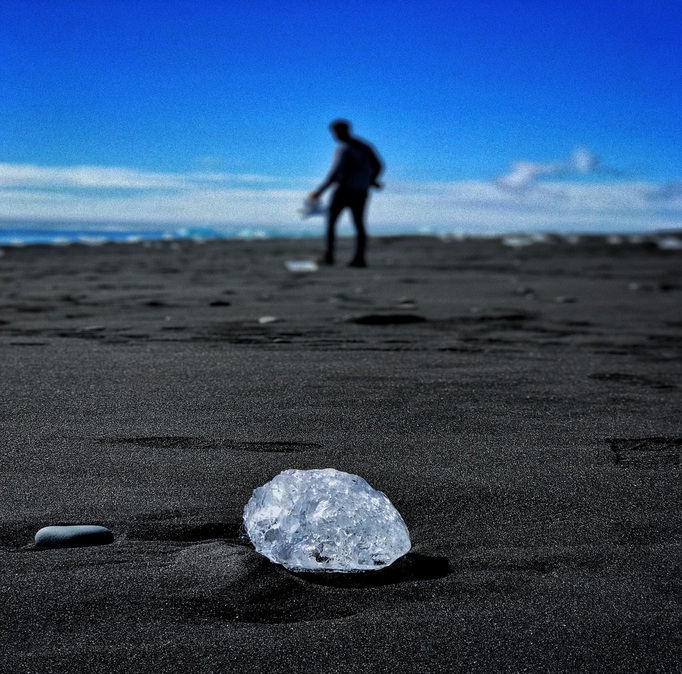
![where to buy lab created diamonds [featured image] princess cut diamond ring](https://mytop10diamondwebsites.com/wp-content/uploads/2022/01/diamondring-princess-lab-created.webp)